Imagine a 3500 square feet shelter housed in a 40’x8′ shipping container able to be shipped anywhere in the world at a moment’s notice. That equates to more than 10 times the square footage in a single container. This concept is a 3500 square foot expandable disaster relief shelter.
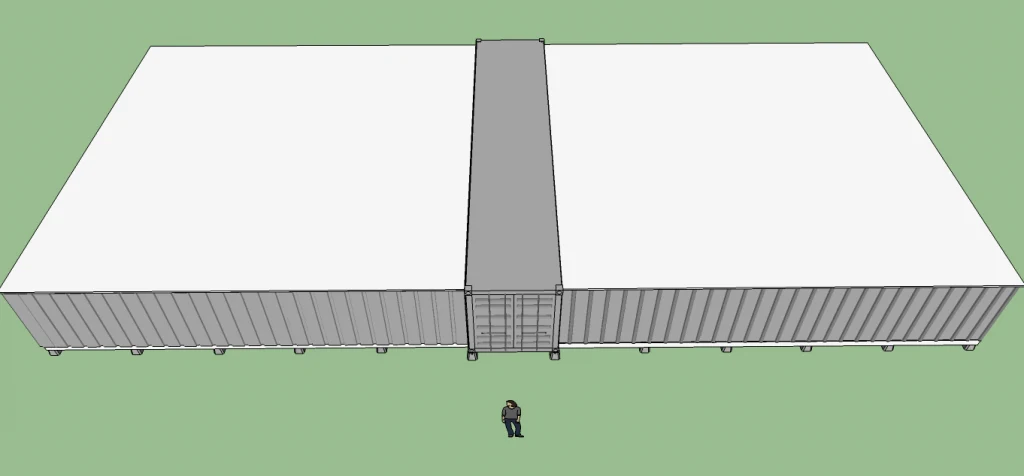
PROBLEM: Millions of people worldwide live in disaster areas. These people are in need of safe and secure shelter from the weather, earthquakes, and other natural disaster events.
SOLUTION: Provide shelter to millions of people by using the most sensible and readily available shelter that already exists.
SHIPPING CONTAINERS: Cargo containers, shipping containers, ISBU’s (Intermodal Steel Building Units).
METHOD: Make it simple to use.
BENEFITS OF SHIPPING CONTAINERS
There are so many uses for shipping containers, and many benefits that make them ideal for portable disaster shelters:
- It makes the most sense to use shipping containers simply because there are literally millions of them readily available.
- Shipping containers are inexpensive.
- They can be easily transported because they are already equipped to be shipped by ship, rail, and truck.
- The transportation infrastructure already exists and is in place.
The only thing left is to create a way to maximize the square footage of a shelter that can be packed into the standard 40’x8′ shipping container.
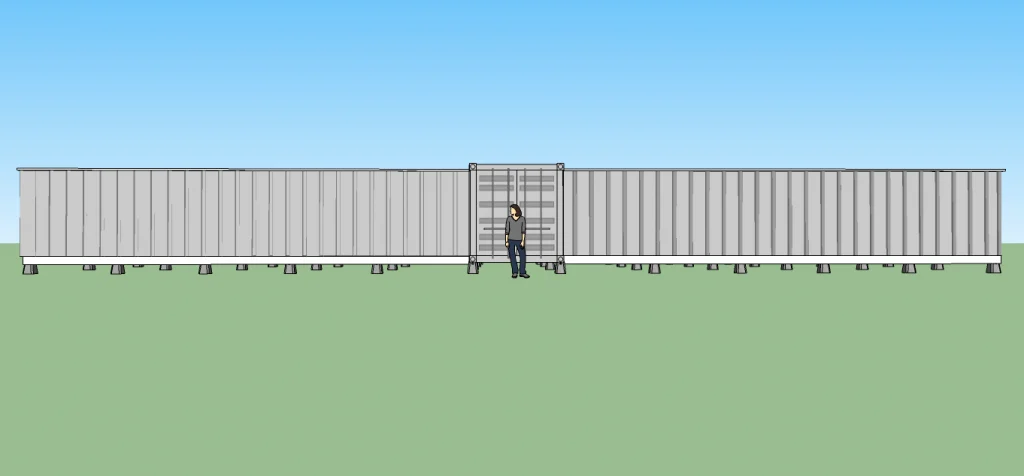
EXPANDABLE DISASTER RELIEF SHELTER
We maximize the shelter space that can be created with a single shipping container by creating an expandable shelter system that can be erected in very little time, with minimal effort, while still maintaining a safe and secure environment.
The whole system is self-contained in a 40×8 box.
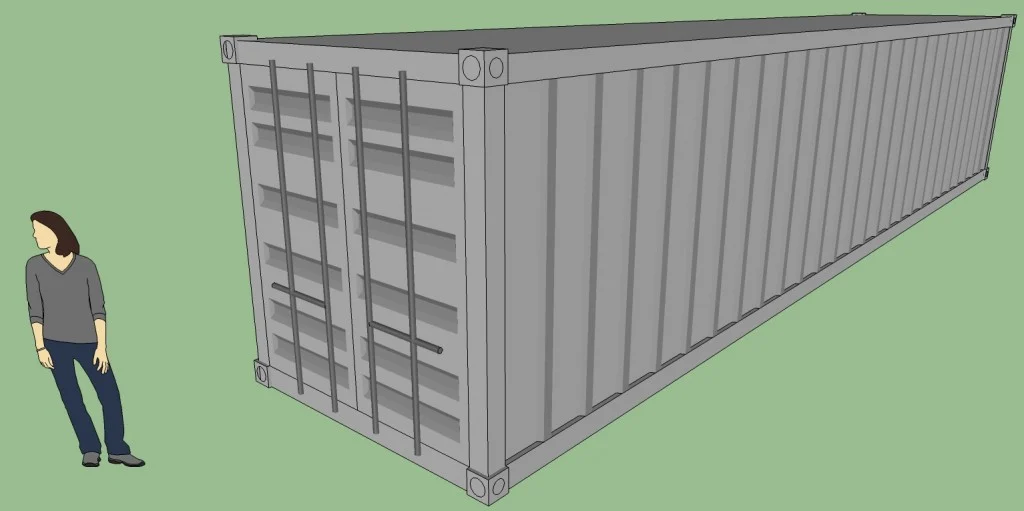
The shipping container shelter:
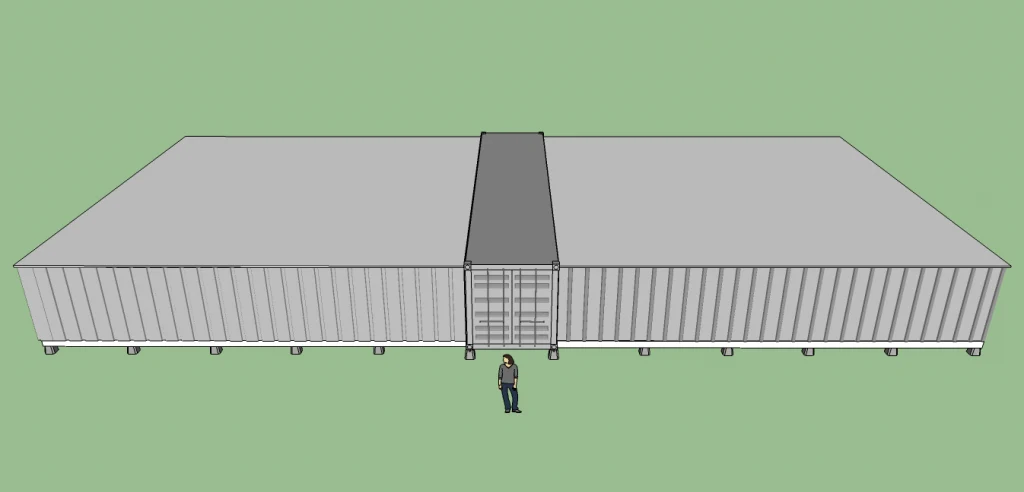
The Outer Walls
The side walls of the shipping container are cut out, reinforced, and placed onto hinges whereby they swing outwardly to create the outermost walls. On the inside of these walls, TOP and BOTTOM are welded rails whereby connected folded panels roll out to form the floor and roof of the shelter.
The Floor
The floor (and fourth wall) consists of six panels that are hinged together accordion style and can be pulled out on the rails. The sixth-floor panel folds up and locks into place forming the fourth wall enclosing the entire structure.
The Roof
Much like the floor, the roof also consists of a series of hinge-connected panels which are pulled out from the container onto the rails which are mounted on the inside of the exterior walls.
13 PANELS
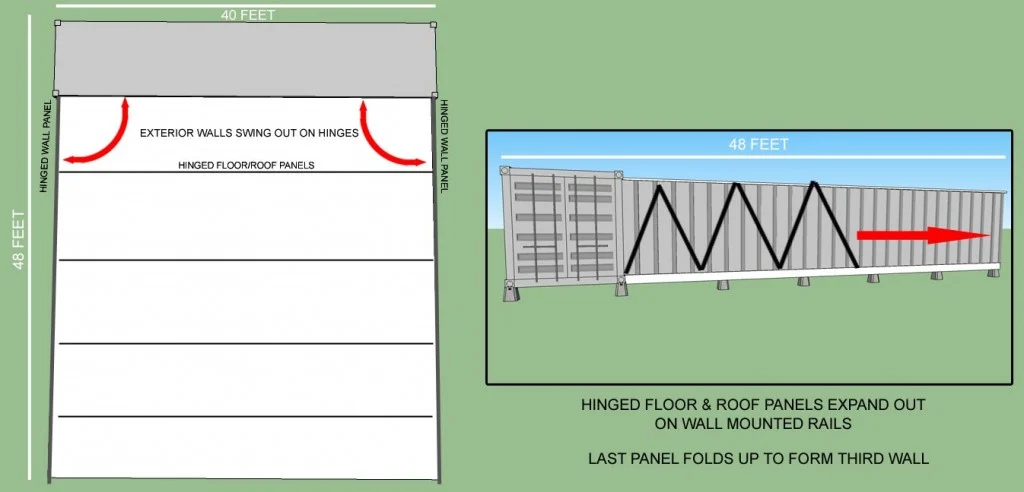
The walls, floor, and roof on each side of the shelter consist of 13 individual panels and are a mere 3 inches thin. Meaning they can be folded into the container minimizing the interior space used during transport. Each side of the system can be folded into a 39-inch space. Calculating both sides, that is only 78 inches, which fits nicely inside the shipping container.
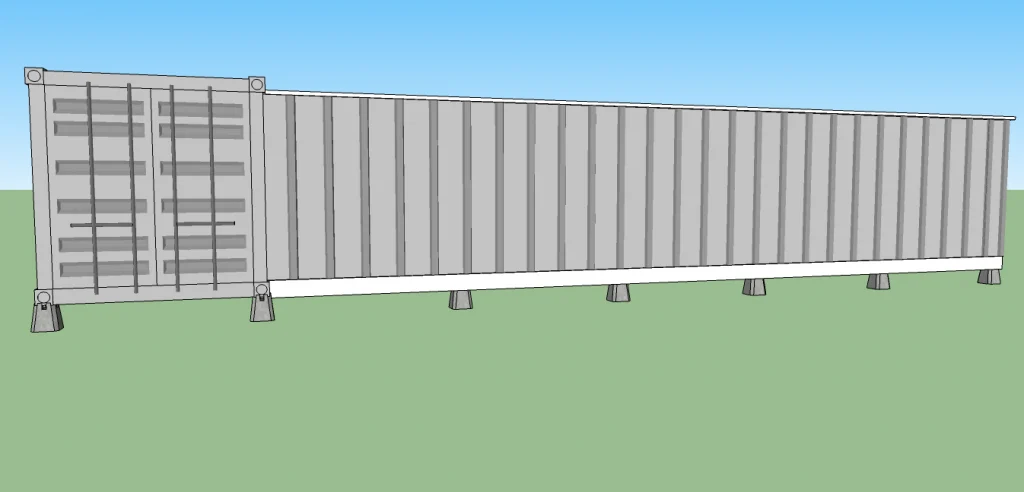
Each side, the roof and hinged floor panels of the shelter expands out like an accordion.
3500sqft SHELTER
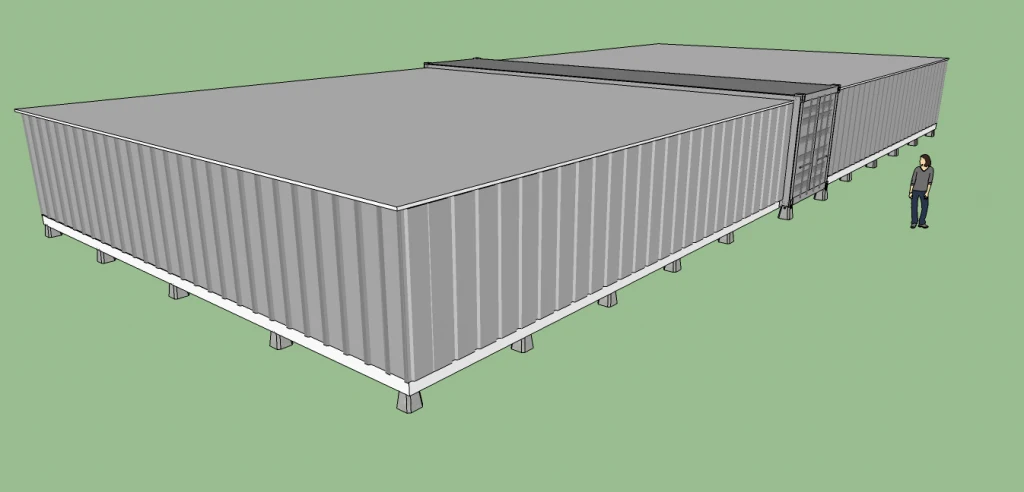
Once deployed the whole system has a footprint of about 3500 square feet.
It’s more structurally sound than tents, yurts, and makeshift shanties that are used in most disaster areas. The shelter this building provides could probably survive even a severe earthquake or hurricane as well.
It can house many families, and can even be turned into an emergency headquarters. It could also work as an administration building, cafeteria, warehouse and storage building, community center, and can even be used for entertainment purposes.
STANDARDS
And because it uses readily available shipping containers which are standardized for shipping freight all over the world, they can be shipped ANYWHERE in the world at a moment’s notice.
MORE SAFE AND PERMANENT THAN TENTS AND SHANTIES
In many parts of the world (as we speak) people hit by natural disasters are living in tents and shanties that are unsafe, unclean, and just plain dismal.
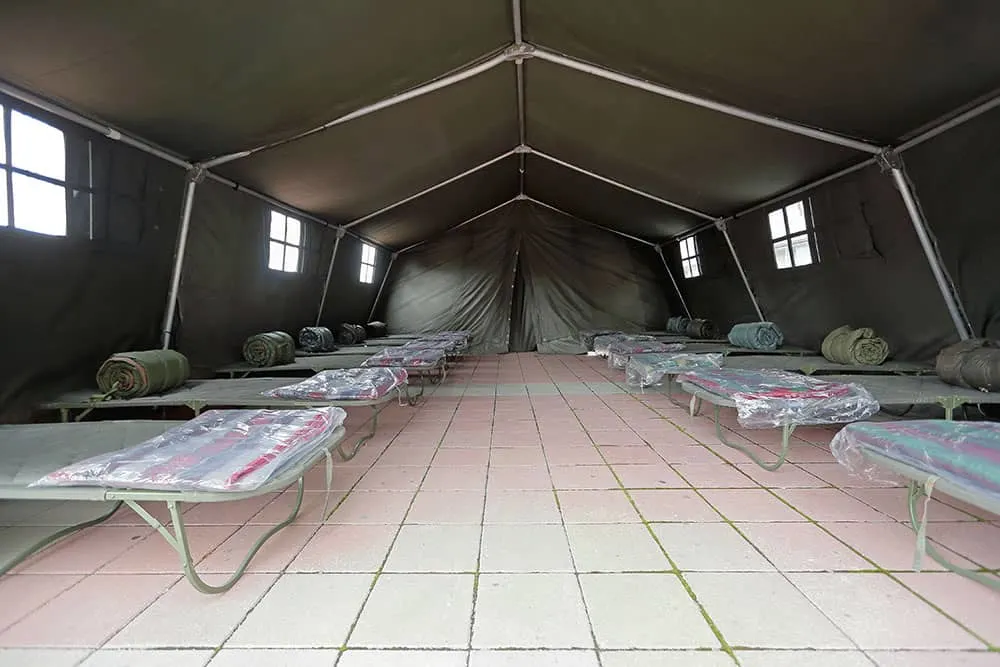
Shutterstock/Baloncici
Tents are not designed to provide shelter for prolonged use. At best a tent can be used for few months or maybe a year IF the weather holds, but if a large storm like Hurricane Isaac, for example, hits the area, it will decimate those living in tents.
A shipping container structure such as this one can provide shelter for prolonged periods of time, while the infrastructure and systems of government recover from a natural disaster.
They can then be turned into more permanent structures if the need arises, or the shelter can be folded up and moved with minimal effort.
This just works.
The only thing left to do now is build it!
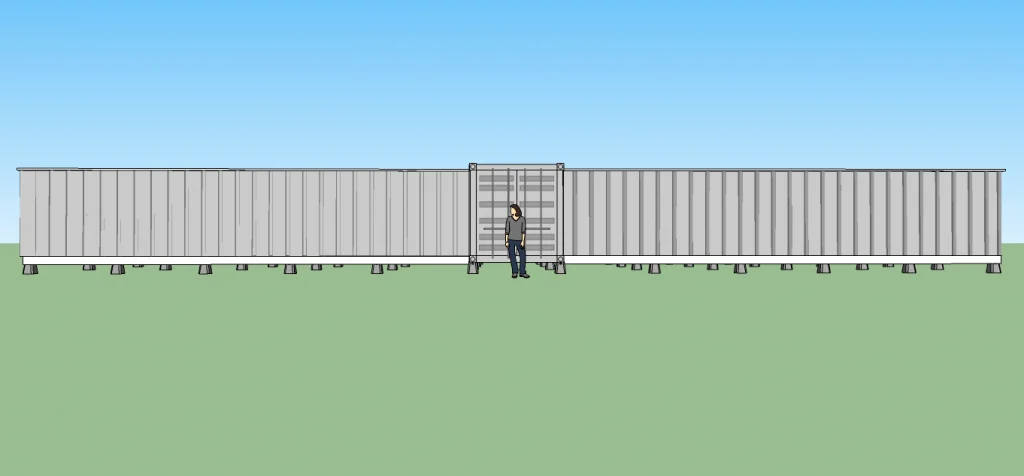
——————————————-
This design is licensed under the Creative Commons license
Attribution-NonCommercial-ShareAlike 3.0 Unported (CC BY-NC-SA 3.0)
http://creativecommons.org/licenses/by-nc-sa/3.0/
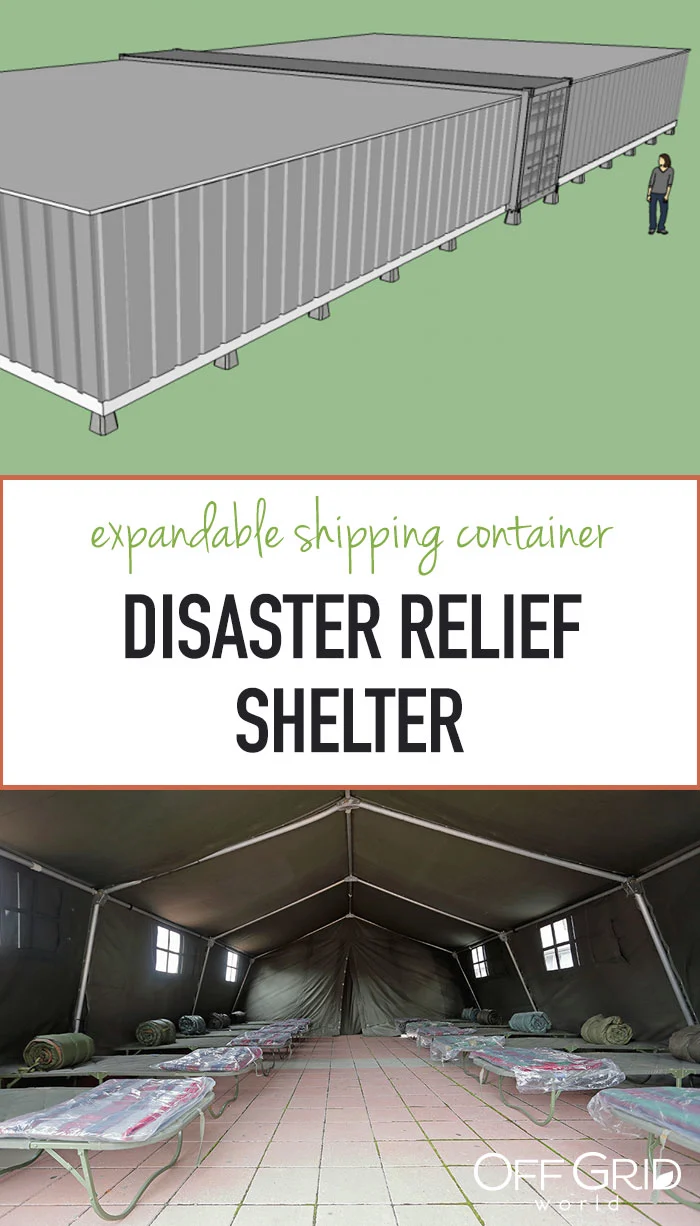

Jon
Thursday 20th of December 2012
I like the way you think. If you place them side by side you reduce the ability to get natural light. The great thing about containers is that you can stack 'em 8 high. Check this out: www.snoozebox.com These were used for the Queen of England's diamond jubilee, among other things. Take a good look at the rooms. That can all be done cheaper. Use plywood to make the furniture and put in communal bathrooms instead of private. Folding beds could free up space to make the rooms multi-use. If you want to make a long-term house with it I'd look at designs like this: http://www.cargotecture.com/page2.html My wife and I are considering making one of these as a trailer for long term temporary housing while building a house. Our design is a little different. An opaque bathroom door is the first change. We also are looking at putting a bathtub under the couch and building a collapsing loft area over the kitchen. We'd collapse it when on the road to stay under 13'. Once our home is done we want to bolt it to the house as a removable permanent addition. It's also a good bug-out trailer or camper. The tiny house movement and RVs both have come up with ways to live comfortably and cheaply in small spaces. I got a bunch of ideas from faircompanies.com, they even have a full length documentary. They have a bunch good ideas for sustainability/off grid living and some bad ones. Some of those folk are nuts! And that's coming from me!